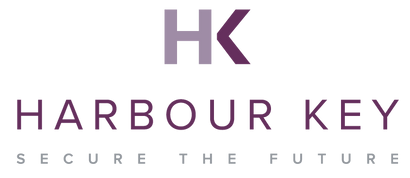What to consider before the 6th April 2015 and also in preparation for the following tax year.
Introduction
As the end of another tax year approaches, now is a good time to consider your financial position and check whether you have taken full advantage of the tax reliefs and exemptions that are available, as well as prepare for the new tax year.
This checklist is intended to provide a brief guide to the opportunities that we believe may be worth considering. There are many tax-saving measures available and we detail below a number of steps that can be taken to improve your tax position, without significant effort.
We have listed some planning points to consider now which may help reduce your taxes for next year if implemented now. The impact of taxation is only one element in establishing your financial position – you should also be considering such issues as your savings, investments and succession planning.
The following guide is not an exhaustive list of ideas. Always take professional advice when deciding your tax planning or investment strategy.
2014/15 YEAR END TAX CHECKLIST
Income Tax
Sharing income with spouse/civil partner If you are married or in a registered civil partnership and have taxable income incurring tax at either 40% or 45%, significant savings can be made by diverting investment income into your partner’s name if they have no earnings or are a basic rate taxpayer. Diverting income and other measures set out below are particularly beneficial if your income is over £100,000 because the personal allowance is reduced by £1 for every £2 of net income over £100,000. For income between £100,001 and £120,000 the effective top rate of tax is 60%.
Business owners - utilise dividends and pension If you are running your own company, you should consider drawing a combination of salary, dividends and pension contributions to limit the overall rate of tax as much as possible. Tax can also be deferred by delaying payments of discretionary income such as bonuses or dividends until the next tax year. You might want to take a view on the likely outcome of the general election in May and the possibility of changes to income tax rates in 2015/16.
Business owners – repay loans from a ‘close company’ If you have received funds by way of a loan from a close company of which you are a director or shareholder, the company will face a 25% tax charge if the loan is not repaid within nine months following the end of the company’s accounting period. Repaying the loan within the nine month period is simplest, but if it is repaid later, the tax charge that the company will have had to pay can be reclaimed. Funding the repayment by way of a dividend from the company is a common solution, as is repaying one loan but taking out a new one for a similar amount. However, since 20th March 2013, ‘bed and breakfast’ loans are not permitted and any new loan made by the company to a shareholder within 30 days is effectively treated as a continuation of the original loan.
Tax efficient investments Investment in businesses which qualify under Enterprise Investment Schemes (EIS), Seed Enterprise Investment Scheme (“SEIS”) or Venture Capital Trusts (”VCT”) can generate income tax relief, although you should take independent financial advice before investing. EIS provides income tax relief of 30% on investments of up to £1,000,000. SEIS provide 50% tax relief on investments of up to £100,000, whatever the individual’s tax rate. VCTs provide 30% income tax relief on investments up to £200,000 per annum and the dividends are tax free. EIS, SEIS and VCT investments are all free of capital gains tax provided the investment remains qualifying and is held for the required period of time.
Maximise pension contributions Pension contributions up to a certain limit are free from tax. As of 6 April 2014, it is only possible to make a qualifying annual contribution up to a maximum of £40,000. It may be possible to bring forward any unused allowances from the previous three years (when the annual maximum was £50,000 pa), enabling a maximum contribution of up to £190,000. ‘Salary sacrifice’ (giving up salary or bonuses in return for pension contributions can also save National Insurance.
Tax on savings – low incomes and children You or your children may be incorrectly paying tax at source on interest from your savings. If your total income for a tax year falls within your tax allowances (i.e. you are not a taxpayer), you can elect with the bank or building society to have interest paid on your account without tax taken off. Remember that you may need to elect back into having tax deducted if your income goes up in the future. As announced by the Chancellor at Budget 2014, from 6 April 2015 the starting rate of tax for savings income (such as bank or building society interest) will be reduced from 10 per cent to nil, and the maximum amount of taxable savings income that can be eligible for this starting rate will be increased from £2,880 to £5,000. One of the effects of this change, when combined with changes to the tax-free personal allowance, is that savers will not be liable for tax on any interest they receive if their total taxable income for 2015-16 is less than £15,500. If this is relevant to you consider whether it is possible to defer investment income from 2014/15 until after 5 April 2015.
Claim refunds of tax paid at source Your spouse, civil partner or family dependant may inadvertently be paying tax on savings income or income from a trust even though their total income is below the tax threshold. Request and complete a tax refund claim form from HMRC for 2014/15.
Landlords If you have let property where the mortgage is below the market value at the time you acquired it for rental, e.g. you have paid off part of the original debt or the property was once your main home, or the property has received capital improvements, it may be possible to release that capital for personal use through a re-mortgage and still claim the related interest as a deduction against rental income. Interest relief gives effective tax relief at your top rate of tax (although this may be less attractive where interest rates are low). Investing the capital released into an asset that produces a tax-free return, or a capital only return, could increase the net return from both assets over a period of years. With the property market on the up and the economy improving, consider whether current mortgage deals will last beyond 2015.
Change Your Company Car Every year the taxable benefit on company cars is increased by reducing the level of CO2 emissions that trigger an increase in car benefit. For example, a car with emissions of 150g/km triggers a taxable benefit in 2014/15 of 23% of list price. Over the next two tax years the increase will be 2% per year so the same car will give rise to benefits of 25% in 2015/16 and 27% in 2016/17. Review your company car situation, particularly if you drive an electric car as these remain tax free until 5 April 2015 but In 2015/16 the rate will jump to 5% and in 2016/17 it will be 7%.
Check your PAYE coding notice We reported previously on the number of PAYE coding notices that have been issued incorrectly and resulted in taxpayers receiving tax demands for underpayments. When you receive your coding notice (accountants/agents no longer receive copies), make sure it is correct.
Partnerships/LLPS If you trade via a partnership or LLP, you should be aware of the major changes that happened in 2014, in particular regarding the potential deemed employment status of certain partners and problems associated with LLPs having corporate partners. A review of the arrangement should be undertaken to see if your business model is likely to be attacked by HMRC. It may be worthwhile considering changing your current trading structure, perhaps to a limited company.
Individual Savings Account (ISA’s) Make the most of individual savings account (ISA) maximum annual contribution for the tax year of £15,000, (all of which can be put into a ‘cash ISA’ if preferred). This provides an income tax free return and gains are exempt from capital gains tax. From 6 April 2015, a surviving spouse or civil partner, on top of their usual allowance, will be able to invest as much into their own ISA as their spouse or civil partner used to have. In other words, The government will allow an additional ISA allowance for spouses or civil partners when an ISA saver dies that is equal to the value of that saver’s ISA holdings on their date of death. Thus, allowing the surviving spouse or civil partner to transfer the ISA into their own name.
Shares no longer of any value Look for losses and consider carefully the year in which they are claimed – losses on subscriber shares in EIS-qualified companies and certain other unquoted companies can be claimed against income tax. If a loss has arisen but not yet been claimed, consider claiming the loss in a year when you are likely to be a higher rate or additional rate taxpayer. For all individuals the maximum relief that can be claimed against general income for losses and interest payments is capped at the higher of £50,000 and 25% of adjusted total income.
Charitable donations Provided that you pay income tax above the basic rate, you should be able to obtain income tax relief at your marginal rate for cash donations made under gift aid. Gift Aid relief is not affected by the £50,000 cap applied to certain other tax reliefs.
Life assurance based investments Whilst these products may allow a withdrawal of 5% tax free each year, on maturity or in the event of a full or partial early surrender the profits are subject to income tax. It may be possible to surrender these policies before 6 April 2015 so as to make full use of any surplus basic rate band that you have available. Please note that gains on some events are calculated by reference to the policy year rather than the tax year.
Investments with capital growth If you are a 40%/45% income taxpayer with funds to invest, consider investments which generate capital growth taxed at 28% as opposed to income.
Investments held by discretionary trusts Income investments held by a discretionary trust will be taxed at 45% which has a significant impact on investment returns. Trustees could consider alternative investments strategies geared to either capital growth or non-income producing investments in preparation for the new tax year. Conversely, it may be advantageous for beneficiaries to receive a distribution in the current year if their personal tax rate is low and they can claim a refund of part of the tax paid by the trustees.
Keeping your child benefit If you or your partner’s taxable income exceeds £50,000, child benefit is clawed back. The claw-back (officially the high income child benefit charge) is at 1% of the benefit for every £100 of income over £50,000. Therefore, when income reaches £60,000, the financial benefit of the claim is lost. It is individual income, rather than family income, that is the key factor. Consider if there are any measures that can be taken to keep your annual taxable income below £50,000. Adopting some of the measures set out above such as making pension contributions or sacrificing salary/bonus in return for employer pension contributions can reduce your taxable income to keep it below the £50,000 threshold. It may also be possible to reallocate assets or trading profits between you to keep both partners below the threshold.
Leaving the UK Leaving the UK can be an effective way to save tax in the right circumstances, but it is vital to plan the departure date. For example, if you intend to be non-UK resident for 2015/16, now is the time to start planning. To establish yourself as non-resident in the UK, you will need to meet the various requirements of the UK’s statutory residence test and may need to remain non-UK resident for five full tax years to mitigate certain UK taxes such as CGT. The requirements of the test vary according to your circumstances, so detailed planning is vital.
Non-UK domiciled individuals and remittances If you are not domiciled in the UK, review your remittances for the 2014/15 tax year well before 5 April. There may be scope for further remittances to the UK or it may be appropriate to take remedial action to reduce future liabilities. For example, individuals who bring or transfer foreign funds to the UK to invest in certain qualifying companies have been able to do so without incurring UK tax charges regardless of the source of the funds remitted. Investments can either be by way of loans to or the acquisition of shares in an unconnected company.
Capital Gains Tax
Take less income to reduce your CGT rate With the rate of CGT dependent on your total taxable income, it may be worth considering reducing your income potentially resulting in a lower CGT rate being applied to any gains (basic rate taxpayers pay CGT at 18%). Higher rate relief on pension contributions will extend the basic rate band and is a method of providing an indirect CGT saving.
Utilise your annual allowance and losses If you have stocks and shares that have yielded gains that are unrealised, consider selling shares to utilise your personal CGT Annual Exemption (£11,000). If you have already realised gains and have some investments standing at a loss, consider selling the ones at a loss which should reduce your tax bill. You can also gift assets subject to CGT to your spouse, allowing him or her to use their own CGT exemption. Beware, there is anti-avoidance in place to catch re-purchases of shares shortly after they have been sold – the triggered gain/loss on the sale is ignored.
Transfer investments to your pension fund(s) Consider transferring some your investment and commercial property portfolios into a pension, particularly if standing at a loss, you will effectively negate the impact of any CGT liability if there is a gain and make an immediate profit of up to 22% as result of the income tax relief on pension contributions. A transfer of shares will attract a stamp duty charge at 0.5%. A transfer of property will be liable to SDLT at up to 4% and so transferring a part interest in the property might reduce the liability. Note that pension contributions are now subject to annual restriction as explained above.
Defer capital gains If you have realised a capital gain, the tax on the gain can be deferred via an EIS qualifying investment. If you sold an asset during 2014/15 that had been used in your business and you realised a capital gain, the gain can be rolled over if you buy another qualifying business asset within three years. Alternatively, if a qualifying investment was made in 2014/15, you can match this with a gain on disposal of another qualifying business asset within 12 months to roll over the gain that would otherwise be taxed in 2015/16.
Utilise tax bands The CGT rate of 28% applies to gains in excess of the basic rate income tax band (18% for those individuals whose taxable gains fall into the basic rate band). If a spouse or civil partner is not fully utilising their basic rate income tax band, then consider transferring capital assets prior to sale so that part of the gain is taxed at 18%. Even if either spouses or civil partners are taxed at the same rate there may still be an opportunity to use both individuals’ annual exemptions of £11,000 rather than one.
Seed Enterprise Investment Scheme (SEIS) Qualifying SEIS investments made in 2014/15 can be used to reduce capital gains tax charges arising in the tax year and in 2013/14 (the previous tax year) by 50%. Non-UK tax residents – sale of UK residential property From 6 April 2015 the sale of any UK residential property by a non-UK resident will be subject to UK capital gains tax on the gain accruing from that date. With an upturn in the property market, consideration should be given to planning now because occasional occupation by the owner may not be sufficient to secure CGT exemption via private residence relief.
Inheritance Tax
Annual gift allowance There is an annual £3,000 gift exemption, it can only be carried forward for one year before it is lost.
Allocate inheritance to others If you have been the recipient of a bequest upon the death of a friend or relative within the last two years, consideration should be given to the use of a Deed of Variation if you do not require the gift or wish the bequest to go to another beneficiary such as a child or grandchild.
Review qualification for business assets and/or agricultural property Review the position of business assets and agricultural property to make sure the appropriate conditions apply for the 100% relief. For example, the relief on unquoted shares may be restricted if there are “excepted assets” in the balance sheet, such as large holdings of cash or a property occupied by a shareholder.
Review borrowing arrangements Borrowing which is secured against business assets will not reduce the value of your taxable estate if relief is available to exempt them from IHT. If the borrowing is secured against non-business assets, the outstanding debt can reduce the value of your estate for IHT purposes. (You need to consider very carefully before taking on a business risk that might endanger your home or other investments).
Should you require any further details on the items contained in this guide or tax advices in general, please do not hesitate to contact Harbour Key Limited.
If you wish to sign up to our regular updates please go to our website.



